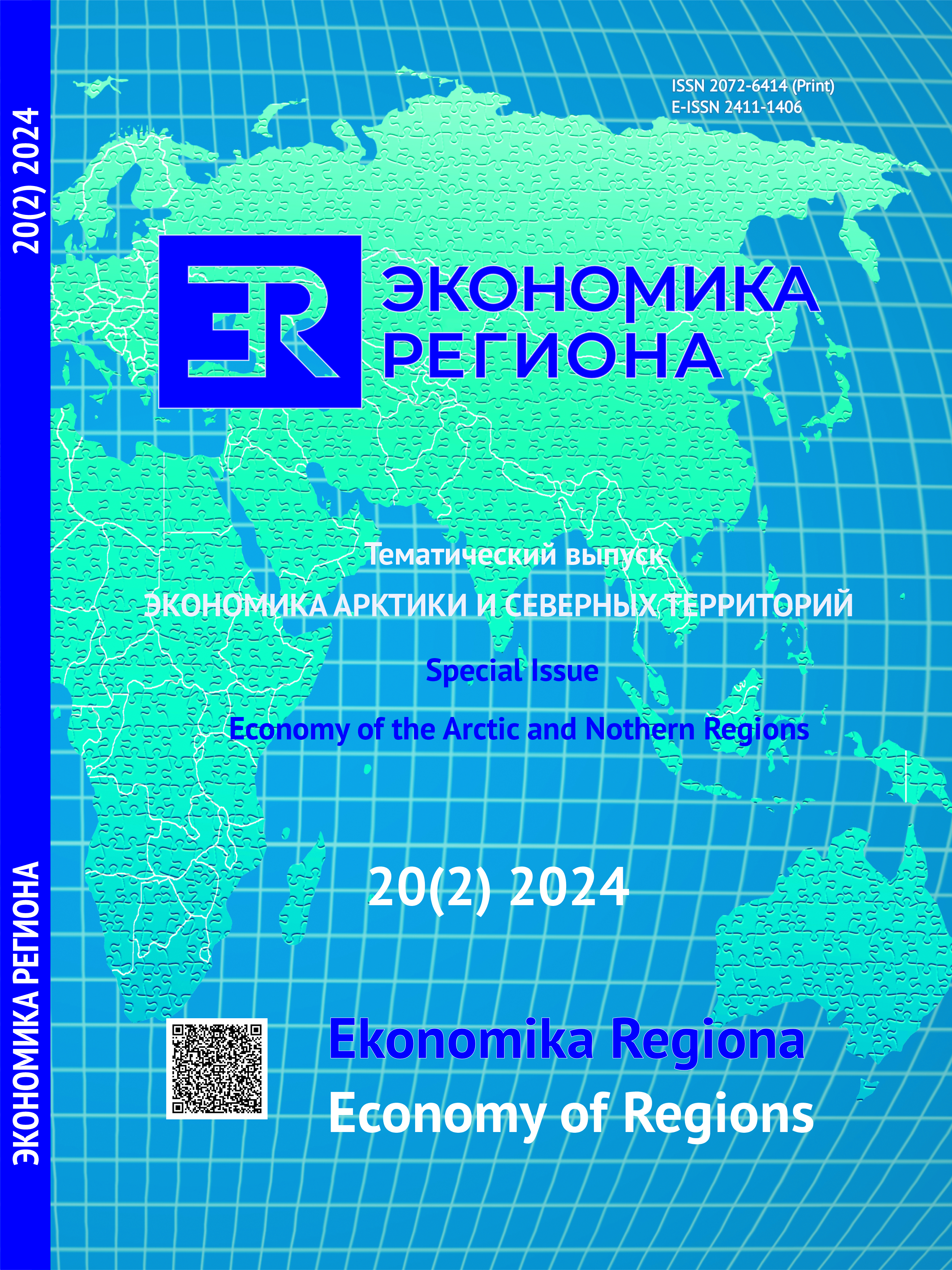Russian Arctic-2035: Multi-Scale Forecast
DOI:
https://doi.org/10.17059/ekon.reg.2024-2-3Keywords:
Арктическая зона, арктическое прогнозирование, зональный подход, технологический уклад, валовой региональный продукт, полимасштабность, пространственные экономические пропорции, региональная специализация, инвестиционные проекты, изолированные районыAbstract
The subject of the study is the forecast of the development of the Arctic territories of Russia at the zonal, regional and municipal levels based on the concept of technical and economic (structural) dynamics of N. Kondratiev – S. Glazyev – С. Peres. The object of study is the Arctic zone of the Russian Federation. The purpose of the study is to describe the technical and economic dynamics of the Arctic territories until 2035. This goal determined the solution of three tasks: 1) identifying the features of new resource development of the Russian Arctic based on the mineral resources and fuel and energy potential of the Arctic territories of Russia; 2) justification of the current situation in the regions of the Russian Arctic, such as the dynamics of technological structures and calculated positions on the volume of GRP in 2035; 3) compiling a list of Arctic municipalities (49) with limited delivery times for cargo and their typology based on the speed of technical and economic dynamics. Results of the study: I. The resource potential of the Russian Arctic from the point of view of technological structures can be strengthened through the commissioning of deposits of graphite, antimony, and bauxite, the global demand for which is characterized by favorable conditions in the forecast period; II. The regions of the Russian Arctic are differentiated based on the analysis of greenfield projects carried out during the forecast period into three groups of technological renewal: a) maximum; b) partial; c) minimal. The forecast of the GRP of the Arctic territories based on resource production indicators in 2035 determined their rank: 1) Yamal-Nenets Autonomous Okrug; 2) Murmansk region; 3-4) Nenets Autonomous Okrug and the Arctic of the Krasnoyarsk Territory; 5) Arctic of the Republic of Sakha (Yakutia); 6) Arctic of the Komi Republic; 7) Chukotka Autonomous Okrug; 8) Arctic of the Arkhangelsk region; 9) Arctic of the Republic of Karelia. III. Arctic municipalities with limited delivery times are separated into four groups from the point of view of the prospects for the formation of a new technological structure based on new projects: 1) maximum potential (12); 2) average potential (9); 3) without new mining projects, but with prospects for completing the development of previously started ones and technological modernization of old projects (12); 4) without prospects for the deployment of new projects for the development of non-renewable resources, but with prospects for the development of biological resources (16). Possible application of the results can be documents of strategic planning of the Russian Arctic at the zonal, regional and municipal levels.
Downloads
Published
How to Cite
Issue
Section
License
Copyright (c) 2024 Пилясов Александр Николаевич , Котов Александр Владимирович

This work is licensed under a Creative Commons Attribution 4.0 International License.




